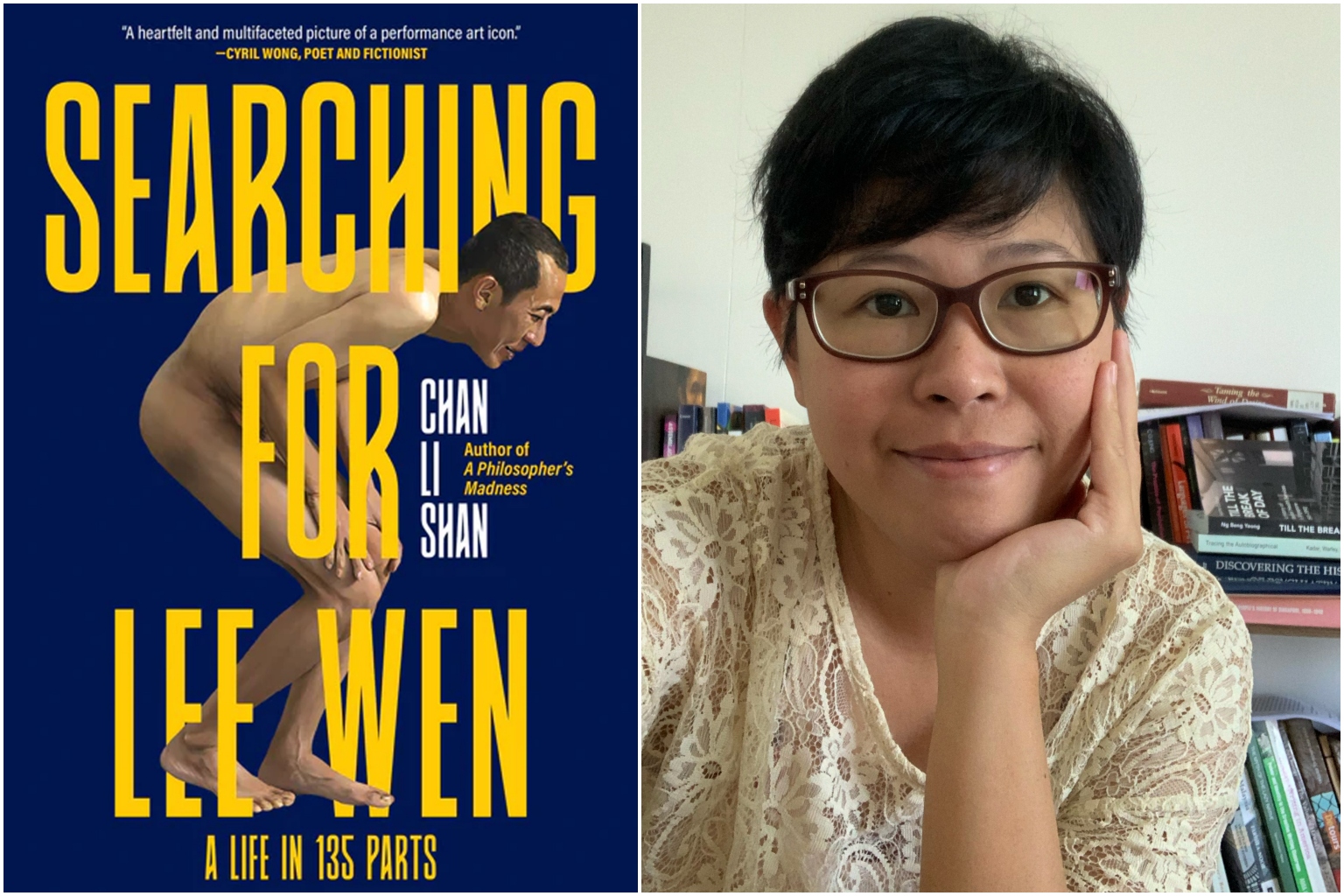Book review: Searching For Lee Wen is a complex look at an iconic artist
Sign up now: Get ST's newsletters delivered to your inbox

Searching For Lee Wen: A Life In 135 parts by Chan Li Shan.
PHOTOS: EPIGRAM BOOKS, COURTESY OF CHAN LI SHAN
Follow topic:
Searching For Lee Wen: A Life In 135 parts
Searching For Lee Wen is a biography written out of an abundance of respect and a complicated love.
Right off the bat, Singaporean author Chan Li Shan makes sure readers know that her subject, late performance art icon Lee Wen, might not have been pleased with the result.
He had expressed his displeasure at some of her early drafts, exhausting her to the point of giving up the project, before his death from a lung infection in 2019 spurred her to return to the tribute.
Freed from Lee's exacting and capricious oversight, Chan is able to speculate more liberally on the interiority of his life - what she calls "perhapsing".
She is also frank about the negative aspects of his character. Early in the book, she writes sardonically that despite being continually inspiring, Lee was not a good employer as he failed to pay her after more than a month of work as his administrative assistant.
Lee was born in Singapore in 1957, first becoming a banker after graduation, then a full-time artist when he was 32.
He was most famous for his Journey Of A Yellow Man series, in which he did various activities with his entire body painted yellow, directly parodying and questioning racial assumptions that are foisted upon East Asians and Singaporean Chinese.
As one of the most prominent pioneer artists in Singapore, he received the Cultural Medallion in 2005 - an accolade he maintained an ambivalent attitude towards.
In the last 10 years of his life, he continued making art despite his battle with Parkinson's disease. Chan records his last words to her in the biography: "Don't leave me here to die."
The interesting part of Chan's text is that it depends less on fleshing out the chronology and details of Lee's life and more on exploring his ideas of art through glimpses of her conversations with him and descriptions of his performance art itself - an art form that is by nature transient but is memorialised by her setting it down on paper.
The book is divided into 135 short sections with titles like Art As Balance and Art As Mesmerising. Readers are encouraged in the foreword to flit in and out, reminded of chronology only by timelines that Chan has inserted in various parts.
Each entry amounts to an experience that in some ways resembles each of Lee's performances, leaving what seems to be a light initial impression, yet compelling further reflection.
But reading them in order sometimes also delights, as they are meticulously curated.
In one chapter, Chan cites Chinese theatre practitioner Richard Chua: "In my words, don't bother subverting the system, just live and move." This is quickly followed by the next sentence: "The eviction of The Artists Village in 1990 meant that the artists squatting in the kampung were now homeless."
Searching For Lee Wen is a worthwhile read as a gateway to understanding one of Singapore's most renowned art pioneers.
Through it, Chan expresses her gratitude and shows Singaporeans why they should too - Lee spent his life as a man who never stopped giving the people what they did not ask for.
If you like this, read: Hot, Cold, Heavy, Light: 100 Art Writings by Peter Schjeldahl (Abrams Press, 400 pages, $31.35, buy here), a collection of penetrating essays by one of America's foremost art critics on artists ranging from Henri de Toulouse-Lautrec to Lucian Freud.
This article contains affiliate links. If you buy through these links, we may earn a small commission.

